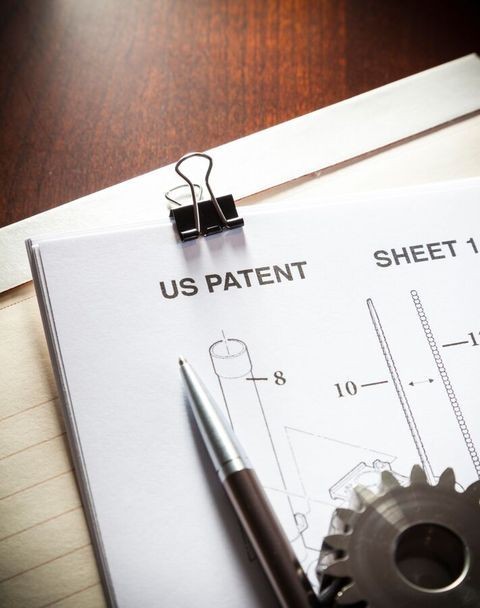Post-Grant Proceedings
Overview
Crowell & Moring’s post-grant team represents both patent owners and petitioners in inter partes reviews (IPRs) and post-grant reviews (PGRs) before the Patent Trial and Appeal Board (PTAB), as well as related appeals at the U.S. Court of Appeals for the Federal Circuit. Our team includes over 40 lawyers with wide-ranging technical backgrounds, including many lawyers with advanced technical degrees.
Contacts
Insights
Client Alert | 2 min read | 06.12.25
Acting USPTO Director Coke Morgan Stewart issued a Director Discretionary decision on June 6, 2025, in iRhythm Technologies Inc. v. Welch Allyn Inc., IPR2025-00363, -00374, -00376, -00377, and -00378 Paper 10 (PTAB June 6, 2025). This decision granted Patent Owner’s request for discretionary denials of institution in five related IPR challenges. It follows several recent Director decisions that have all discretionarily denied petitions for reasons other than the substantive merits of the challenges. However, this decision is the first one that relies upon “[s]ettled expectations of the parties, such as the length of time the claims have been in force,” a new consideration that was first articulated in the USPTO’s “Interim Process for PTAB Workload Management” memorandum (“Interim Memo”) dated March 26, 2025.
Client Alert | 2 min read | 06.06.25
USPTO Director Clarifies Burden on IPR Petitioners Relying on Prior Art Cited During Prosecution
Client Alert | 2 min read | 05.27.25
Federal Circuit Resolves Circuit Split on Scope of IPR Estoppel
Client Alert | 10 min read | 05.06.25
Representative Matters
- Represented the petitioner before the Federal Circuit Court of Appeals following the PTAB’s decision in an IPR that an admission by a patent owner in its Preliminary Response may not be considered by the PTAB when weighing the merits at trial. Our team successfully convinced the Federal Circuit that the PTAB’s decision was incorrect, with the Federal Circuit acknowledging that this was “a question we have not addressed before” and vacating and remanding the PTAB’s decision. Our attorneys were successful on remand in invalidating the remaining patent claims at issue. (See Appeal Nos. 2019-1594, 2019-1604, and 2019-1605)
- Represented the patent owner in three IPRs relating to industry-critical patents covering tissue preservation techniques. Our team convinced the PTAB to uphold important patent claims from each of the challenged patents based, in part, on objective indicia of nonobviousness (i.e., secondary considerations), resulting in significant wins. (See IPR2019-00571, IPR2019-00572, and IPR2019-00573)
- Represented the patent owner in two IPRs concerning patents related to a composite bone graft design for spinal implants. We successfully defended the broadest claims of these patents, resulting in a significant win. (See IPR2019-00569 and IPR2019-00570)
- Represented the petitioner in an IPR targeting U.S. Patent No. 6,306,141, which was one of “[t]he most commercially important patents now pending for medical devices incorporating” shape memory alloys like nitinol, according to the patent owner. Despite the patent previously withstanding two invalidity challenges in district court litigation by other challengers, our team was successful in convincing the PTAB to institute the IPR, leading to a settlement favorable to our client. (See IPR2019-00123)
- Represented the petitioner in a PGR targeting U.S. Patent No. 9,856,287 relating to protein refolding technology used in the production of medications for cancer patients. This proceeding is notable, because the PTAB’s decision granting our motion to add a real party in interest without resetting the PGR filing date was designated as precedential by the PTAB Precedential Opinion Panel (POP). The proceeding later settled. (See PGR2019-00001, Paper 11)
- Represented the patent owner in an IPR targeting U.S. Patent No. 9,808,588, related to a medical device for respiratory treatments. Our team successfully convinced the PTAB to deny institution and find the petitioner failed to establish a likelihood of prevailing on any of the seven grounds at issue. As a result, we proceeded with a parallel patent infringement litigation against the petitioner unencumbered by any IPR proceeding regarding the patent. (See IPR2018-01025)
- Represented the petitioners in two IPRs targeting a vehicle backbone chassis patent. Our team took a creative approach, focusing one IPR on a priority date challenge to encompass the patent owner’s own prior art, and the other IPR on established prior art. The PTAB found all of the challenged claims invalid, and the Federal Circuit affirmed. (See IPR2017-01379 and IPR2017-01380; Fed. Cir. Appeal Nos. 2019-1446 and 2019-0451)
- Represented the patent owner in 15 IPRs stemming from patent infringement litigation between industry competitors relating to positive train control, a then-emerging rail safety technology mandated by federal law. Our team successfully coordinated the defense of the patents at issue from multiple attacks and convinced the PTAB to uphold critical patent claims as patentable over the prior art. A federal district court jury later determined that the petitioner infringed those claims and awarded our client millions of dollars in damages. (See IPR2017-00580, IPR2017-01263, IPR2017-02104, IPR2017-01669)
- Represented the petitioner in an IPR targeting U.S. Patent No. 8,709,027 related to an endoscopic clip used for hemostasis. Following a trial before the PTAB, an appeal to the Federal Circuit Court of Appeals, and remand to the PTAB, our team was successful in invalidating every single claim in the patent. The patent owner subsequently dismissed the patent from a corresponding district court litigation. (See IPR2017-00134)
- Represented the petitioner in an IPR targeting U.S. Patent No. 8,952,138 related to protein refolding technology used in the production of medications for cancer patients. After nearly all claims were found invalid in the Final Written Decision, our team filed a successful request for rehearing and the PTAB agreed to invalidate the remaining claim. (See IPR2016-01542)
- Represented the petitioner in an IPR challenging U.S. Patent No. 8,899,239, related to an electronic cigarette. Despite the PTAB previously rejecting another petitioner’s challenge to the patent, our team successfully convinced the PTAB to institute the IPR and hold in a Final Written Decision that all of the challenged claims were invalid. (See IPR2016-01272)
- Represented the petitioner in an IPR challenging U.S. Patent No. 5,530,431 related to an anti-theft device for electronic equipment. Our team creatively obtained a win by first establishing the purported patent owner lost ownership rights as a result of a bankruptcy proceeding, and then leading our clients’ efforts to purchase the patent from the bankruptcy trustee. This established our client’s ownership of the patent and the PTAB subsequently issued an adverse judgment against the patent owner holding all of the patent claims invalid. (See IPR2015-00481)
- Represented the petitioner in an IPR targeting U.S. Patent No. 8,324,283 related to a multiple sclerosis drug that stood out for being an oral, not injectable, formulation. Following a decision by the PTAB in favor of our client, which invalidated all patent claims, our team successfully defended the win at the Federal Circuit Court of Appeals. (See IPR2014-00784)
- Represented the petitioner in three IPRs targeting U.S. Patent Nos. 8,193,426 and 8,426,813 related to infrared cameras used to detect chemical leaks. Following a hotly contested trial before the PTAB involving 14 depositions over a compressed schedule, the PTAB held 76 patent claims invalid, including all of the patent claims asserted against our client in a corresponding district court litigation. The Federal Circuit Court of Appeals affirmed, leading to dismissal of the corresponding litigation. (See IPR2014-00411, IPR2014-00434, and IPR2015-00065)
Contacts
Insights
Client Alert | 2 min read | 06.12.25
Acting USPTO Director Coke Morgan Stewart issued a Director Discretionary decision on June 6, 2025, in iRhythm Technologies Inc. v. Welch Allyn Inc., IPR2025-00363, -00374, -00376, -00377, and -00378 Paper 10 (PTAB June 6, 2025). This decision granted Patent Owner’s request for discretionary denials of institution in five related IPR challenges. It follows several recent Director decisions that have all discretionarily denied petitions for reasons other than the substantive merits of the challenges. However, this decision is the first one that relies upon “[s]ettled expectations of the parties, such as the length of time the claims have been in force,” a new consideration that was first articulated in the USPTO’s “Interim Process for PTAB Workload Management” memorandum (“Interim Memo”) dated March 26, 2025.
Client Alert | 2 min read | 06.06.25
USPTO Director Clarifies Burden on IPR Petitioners Relying on Prior Art Cited During Prosecution
Client Alert | 2 min read | 05.27.25
Federal Circuit Resolves Circuit Split on Scope of IPR Estoppel
Client Alert | 10 min read | 05.06.25
Insights
Litigation Forecast 2013: What Corporate Counsel Need to Know for the Coming Year
|01.31.13
Crowell & Moring LLP publication
Professionals
Insights
Client Alert | 2 min read | 06.12.25
Acting USPTO Director Coke Morgan Stewart issued a Director Discretionary decision on June 6, 2025, in iRhythm Technologies Inc. v. Welch Allyn Inc., IPR2025-00363, -00374, -00376, -00377, and -00378 Paper 10 (PTAB June 6, 2025). This decision granted Patent Owner’s request for discretionary denials of institution in five related IPR challenges. It follows several recent Director decisions that have all discretionarily denied petitions for reasons other than the substantive merits of the challenges. However, this decision is the first one that relies upon “[s]ettled expectations of the parties, such as the length of time the claims have been in force,” a new consideration that was first articulated in the USPTO’s “Interim Process for PTAB Workload Management” memorandum (“Interim Memo”) dated March 26, 2025.
Client Alert | 2 min read | 06.06.25
USPTO Director Clarifies Burden on IPR Petitioners Relying on Prior Art Cited During Prosecution
Client Alert | 2 min read | 05.27.25
Federal Circuit Resolves Circuit Split on Scope of IPR Estoppel
Client Alert | 10 min read | 05.06.25
Contacts
Insights
Client Alert | 2 min read | 06.12.25
Acting USPTO Director Coke Morgan Stewart issued a Director Discretionary decision on June 6, 2025, in iRhythm Technologies Inc. v. Welch Allyn Inc., IPR2025-00363, -00374, -00376, -00377, and -00378 Paper 10 (PTAB June 6, 2025). This decision granted Patent Owner’s request for discretionary denials of institution in five related IPR challenges. It follows several recent Director decisions that have all discretionarily denied petitions for reasons other than the substantive merits of the challenges. However, this decision is the first one that relies upon “[s]ettled expectations of the parties, such as the length of time the claims have been in force,” a new consideration that was first articulated in the USPTO’s “Interim Process for PTAB Workload Management” memorandum (“Interim Memo”) dated March 26, 2025.
Client Alert | 2 min read | 06.06.25
USPTO Director Clarifies Burden on IPR Petitioners Relying on Prior Art Cited During Prosecution
Client Alert | 2 min read | 05.27.25
Federal Circuit Resolves Circuit Split on Scope of IPR Estoppel
Client Alert | 10 min read | 05.06.25















